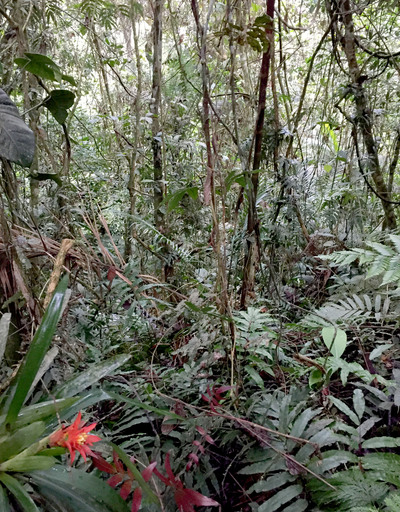
The Central Andes forest is lush and dense.
Photo by Juliana Soto
WEST OF HONDA, COLOMBIA. – I am walking in a forest and listening to a concert of birdsong at dawn. I pick one song out of the chorus – a fast chatter full of melodious whistles – the sound of the sooty ant tanager.
"Today, we will probably get to know this bird up close," I think.
My colleagues and I set up and open our mist nets. Now we are ready to document and study the avian wonders of this corner of the world. We hike up to our base camp, where a room-sized tent in a flat area at the top of a hill serves as our meeting place and field laboratory.

The team's tent is situated on a hilltop.
Photo by Natalia Ocampo Peñuela
Today marks the beginning of our expedition to the Central Andes of Colombia. All eight of us are women. We are all Colombian ornithologists working together to survey the birds here. Interestingly, we are not the first women to do this.
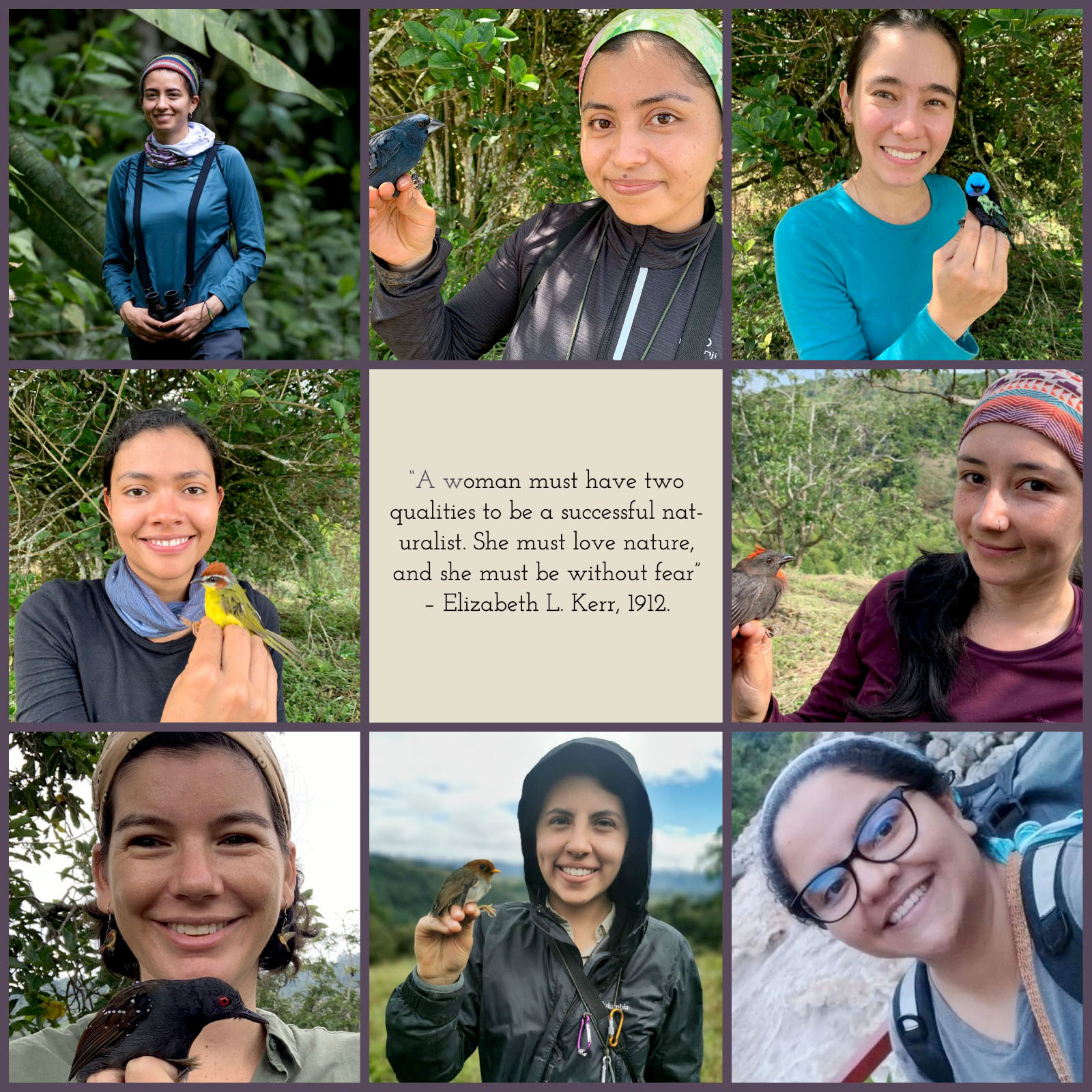
The all-female expedition included, clockwise, from top left, Natalia Pérez, Jessica Díaz, Daniela Garzón, Juliana Soto, Katherine Certuche, Nelsy Niño, Natalia Ocampo and Estefanía Guzmán.
Photos provided by researchers
In the early 20th century, North American naturalists documented Colombia's remarkable avifauna from more than 70 localities throughout the country. Now, a little more than 100 years later, we are revisiting some of those localities to study the bird life, tracking its changes through time, and the history of those earlier expeditions as part of the Colombia Resurvey Project. As we navigate through the country's landscapes, the birds become our guides, revealing glimpses of the country's rich history.
When preparing for this expedition, I discovered that Elizabeth Kerr, a naturalist and collector, had visited Colombia in the early 20th century and contributed significantly to the knowledge of birds and mammals from this part of the world. She worked, mostly alone, at a time when women had very limited access to education and scientific expeditions. For me and my female colleagues in ornithology, the discovery meant a lot. Kerr's contributions had been lost, forgotten, hidden in history. Today, our team of female ornithologists is reviving her memory by following in her footsteps.
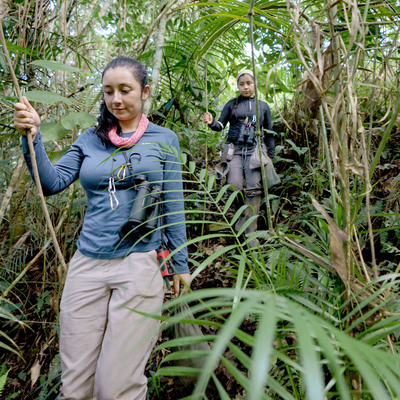
Juliana Soto and Jessica Díaz walk through the forest on their way to check the mist nets.
Photo by Memo Gómez
After organizing all the equipment in the laboratory, we set out to check our nets. We split into two groups to examine the two lines of nets we deployed a half hour ago. As I walk along a trail near the creek, I enjoy the fresh smell of moss, flowers and damp soil.
The first three nets are empty, but when I get closer to the fourth, I see stealthy movement and I know we've caught a bird. It's a female sooty ant tanager, Habia gutturalis, the bird whose melodious song captured my attention earlier today. I know it's a very special bird because it is one that Kerr collected as a specimen near here in 1907. I carefully extract the bird from the net, putting it into a cotton bag for holding until I can process it back at the laboratory tent.
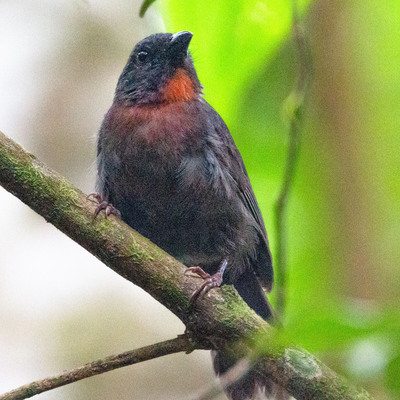
The sooty ant tanager, Habia gutturalis.
Photo by Maria Lila Ochoa
Capturing this bird takes me back to the moment when I first discovered Kerr. My heart sped up when I read, "The Mrs. Kerr Collection" in ornithologist Frank Chapman's 1917 monograph of birds in Colombia. Chapman was a world-famous ornithologist and collector, and the fact that he had relied on the work of a female naturalist was a revelation. Kerr had collected bird specimens in two main regions of Colombia: the Magdalena Valley/Central Andes, and the Atrato Valley. Chapman wrote that Kerr's collections from the Atrato Valley were "the only ones we have secured from this region."
When I first told my project research team about Kerr, they were very excited – especially the women. We began searching for more clues about Kerr. Who was she? What were her motivations for coming to Colombia? Why did she choose these two regions?
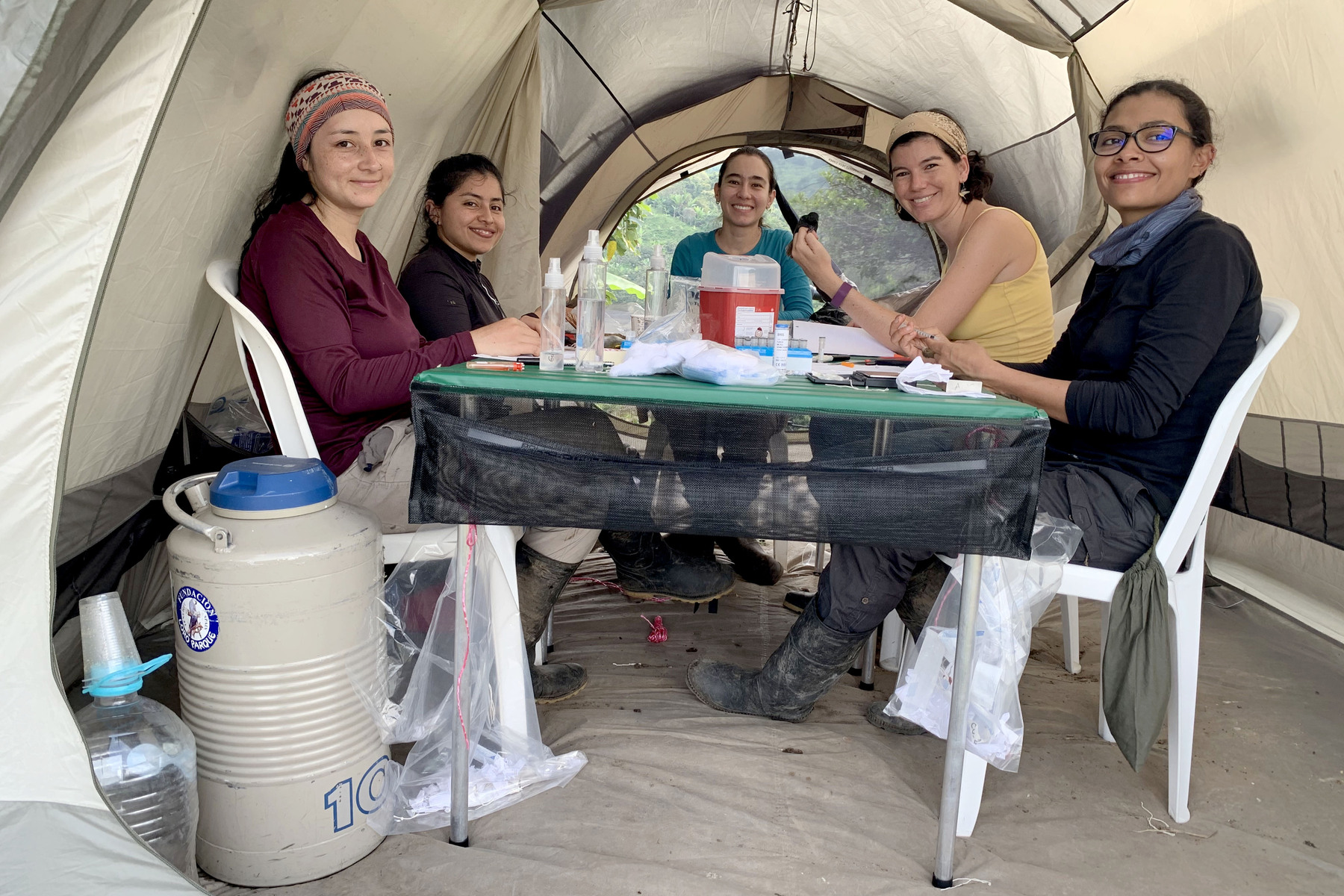
The expedition team works in a tent laboratory.
Photo by Memo Gómez
Back at the field lab, I show my colleagues the tanager. I remember reading about it in Chapman's 1917 monograph. The only sooty ant tanager in the American Museum of Natural History's ornithological collection in New York was collected by Kerr very close to where we are right now.
We were already planning our resurvey expedition when we learned about Kerr's work here. We decided to organize an all-woman team to go to one of Kerr's localities. Our main goal was to resurvey birds a century after she and other ornithologists conducted their studies in this region. But we also wanted to honor Kerr's legacy and aid the recognition of women in science whose work is often unrecognized or hidden.
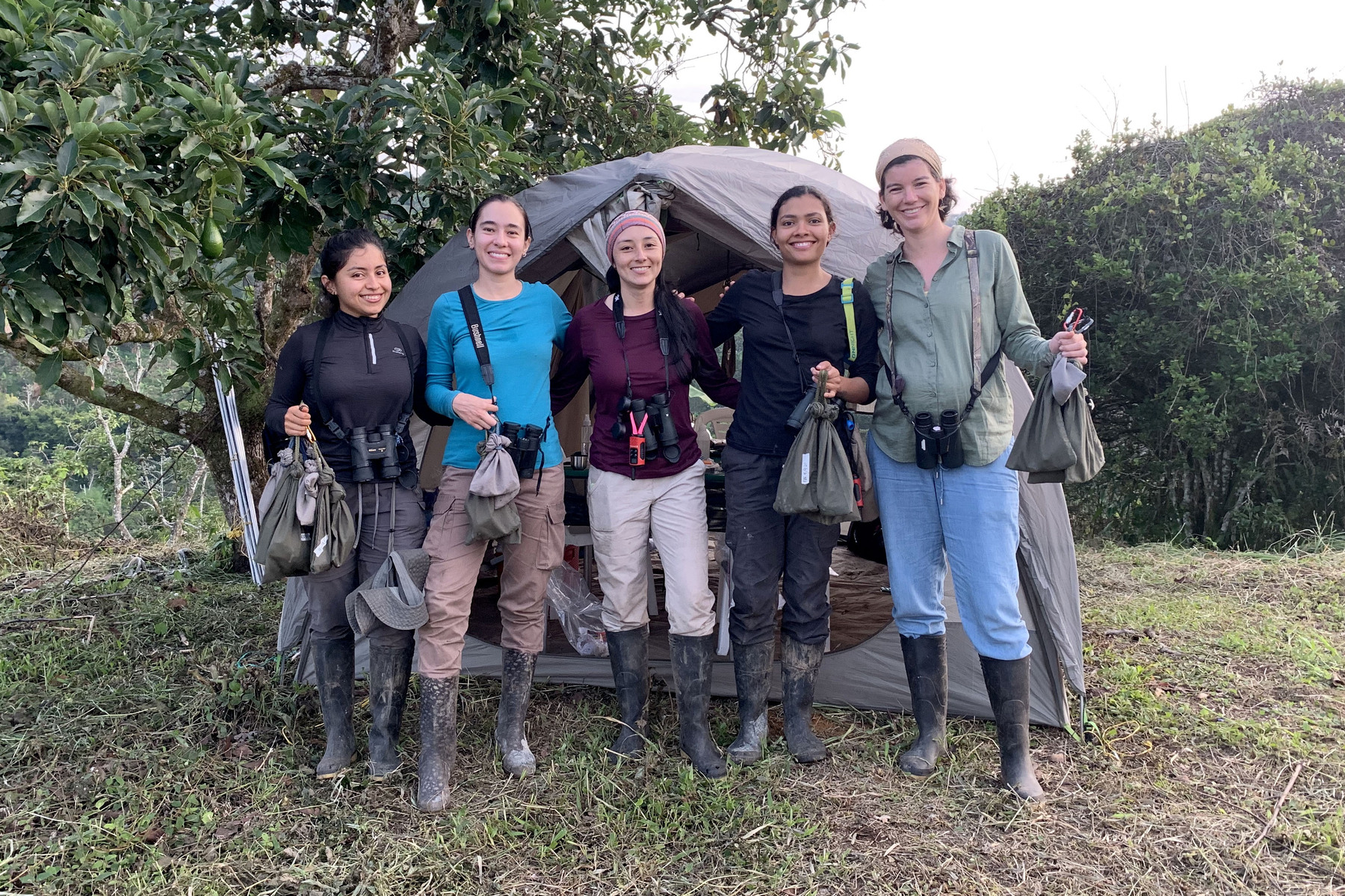
Photo by Memo Gómez
The sooty ant tanager is one of 89 bird species we record in this expedition; 26 of these species had also been collected by Kerr in 1907. Our expedition brings Kerr's invaluable work out of the shadows and acknowledges her contributions. Also, by working for a more diverse and inclusive science while meticulously documenting bird records, including the specimens preserved in Colombian ornithological museums, we are building our own enduring legacy.






